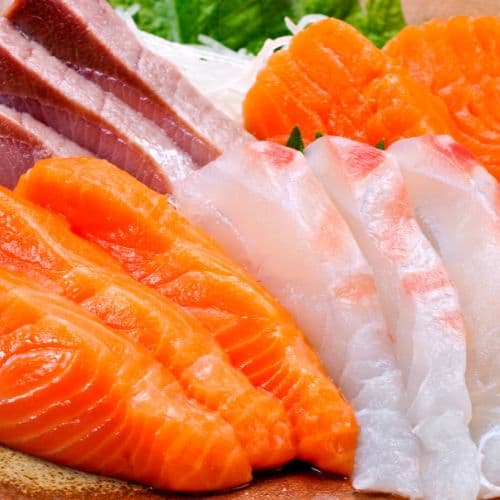
What You'll Master#
The ability to distinguish between fatty fish (like salmon) and lean fish (like cod) - essential knowledge for selecting cooking methods and predicting how forgiving the fish will be during cooking.
Time Needed#
8 minutes
You'll Need#
One piece of oily fish (salmon, mackerel, or tuna)
One piece of lean white fish (cod, halibut, or sole)
Small amount of water
Paper towels
Good lighting
Test 1: Water Drop Test#
What You'll Notice: Water behaves completely differently on oily vs lean fish surfaces
The Action: Drop a small amount of water on each fish surface and watch what happens
The Discovery: Water beads and rolls off oily fish due to natural oils, but absorbs into lean fish flesh
Test 2: Oil Residue Test#
What You'll Notice: Oily fish leaves a slippery feeling on your fingers, lean fish doesn't
The Action: Touch each fish with clean fingers, then rub your fingertips together
The Discovery: The natural oils in fatty fish create a distinct slippery sensation that lean fish lacks
Test 3: Flesh Transparency Test#
What You'll Notice: Fat content affects how light passes through the fish flesh
The Action: Hold thin pieces of each fish up to a light source and compare
The Discovery: Lean fish flesh appears more translucent, while fatty fish looks more opaque due to fat distribution
Test 4: Fat Line Visibility Test#
What You'll Notice: Fatty fish show visible white fat lines, lean fish have minimal fat marbling
The Action: Look closely at the fish flesh, searching for white streaks or lines
The Discovery: Fatty fish display obvious fat marbling that you can see and feel, while lean fish show little to no visible fat
What This Means for Your Cooking#
You'll now confidently select fish based on your cooking method and experience level. Choose forgiving fatty fish when learning new techniques - they stay moist and are harder to overcook. Select lean fish when you want delicate flavors or have mastered precise timing. This knowledge prevents disappointment and builds cooking confidence.